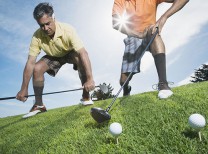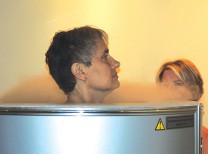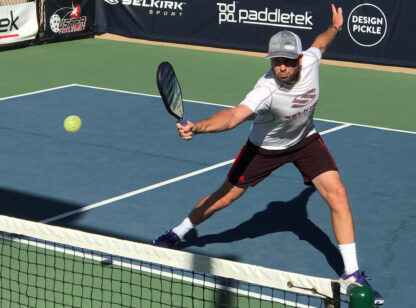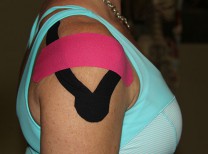
Four new developments in pain management can be broken down into two groups: those that improve pain by physically relieving pressure on nerves, and those that modulate pain using electrical stimulation. All of these techniques are done on an outpatient basis utilizing local or twilight anesthesia and have minimal or no recovery time.
Vertiflex device. Physical pressure on the spinal nerves is due to three major factors, which cause narrowing around the spinal nerves: bulging discs, enlarged ligaments in the spinal canal and arthritis. When sitting, mechanical changes cause the area where nerves exit the spine to open; standing causes the area to narrow, putting more pressure on the spine. Pain when standing and walking may be relieved by sitting or bending forward, such as leaning on a shopping cart. Vertiflex is a small device that is inserted between the vertebra and caresses the spinous processes of the adjacent bones. Bending forward is not impaired, but when standing, the nerve opening is maintained as if you were sitting.
Minimally invasive lumbar decompression (MILD). Minimally invasive lumbar decompression (MILD) relieves pain by decompressing pressure on the nerves, due to enlarged ligaments in the spinal canal. A tiny incision (less than a paper hole punch) is made and a small tube is guided to the back of the lamina. A tiny grabbing device is passed through the tube and small pieces of the ligament are removed. Continuous X-ray guidance and small doses of iodine contrast material monitor the progress. Removal of the part of the ligament will open up the spinal canal and relieve pressure on the nerves.
Spinal cord stimulation. Surgery may not be indicated for many people with pain, either because of previous surgery, and there is nothing to “fix,” or they may have medical reasons that preclude surgery. Spinal cord stimulation can alleviate pain by blocking pain signals going to the brain using electrical current applied in the epidural space; it can be thought of as a “pain pacemaker” for the spine. Prior to 2017, stimulation involved replacing pain signals with a tingling sensation. In 2017, two new stimulation waveforms were introduced – high frequency (HF10) and Burst stimulation. These new stimulation methods do not cause tingling but simply block the pain signals. Moreover, they are about 80 percent effective at relieving back pain. Before considering implantation of the device, a one-week trial period is undertaken to assess the therapy’s effectiveness.
Dorsal root ganglion (DRG). Dorsal root ganglion (DRG) stimulation applies a small electrical current to one to two specific nerves as they exit the spine. DRG allows for the treatment of particular areas of pain, such as the foot, knee or hip. This therapy is especially effective after knee, or hip surgery, where patients may continue to have pain despite adequate surgical repair. Foot pain from neuropathy (frequently diabetic) responds very well to DRG stimulation.
Fortunately, many exciting advances in pain management today can further alleviate suffering.
Dr. Reinhart is double board certified in pain management and can be reached at his office in Palm Desert at (760) 341.2360. For more information visit www.reinhartmd.com.













































Comments (0)